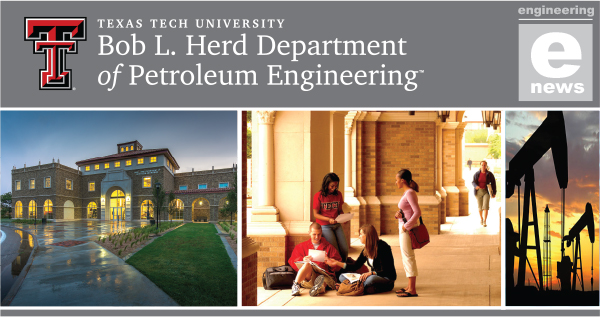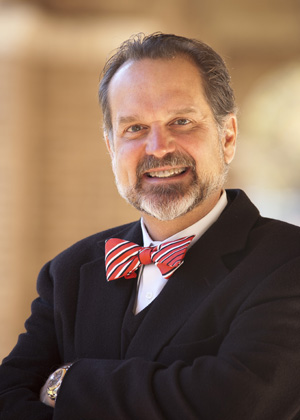
Chair's Message
November 2016:
Things have certainly changed since the last newsletter. Oil prices have dropped, the rig count and graduating senior placement is at an all-time time low and we lost a beloved pillar of our Petroleum Engineering Department. In spite of all this bad news, things in the Bob L. Herd Department of Petroleum Engineering are looking up and are on the right path to success. I think Wink (Dr. Winkler) would be proud of what we are accomplishing. In my visits with him shortly before he passed, he continued to encourage me to mentor the undergraduates and to never forget to challenge them and get them to think critically. He also encouraged the use of the "Daily Quiz." Coincidentally, Wink and I both started our careers as Production Engineers in the Wasson Field in Denver City, Texas!

Senior placement at graduation was only 22 percent, however, we sent out over 1,000 emails to every operating and service company in the Permian Basin. Based on student feedback, this appears to have been successful as several students have reported getting jobs over the last few months. As one might expect, the word has gotten out to freshmen and our expected enrollment for the sophomore year appears to be down. In addition, we have raised the GPA for acceptance into the program to a 3.4. Hopefully, with the addition of a few more faculty, we will achieve a reasonable student to faculty ratio.
As I said, I think Wink would be proud of what we are accomplishing with our visualization tools. Our visualization lab has gone under rapid change with the addition of many models that emulate oilfield operations. The most recent additions are wellbores with packers to demonstrate various types of packer forces under injection and production operations. Several other models like this demonstrate everything from separation to artificial lift. In addition to operations, we also have multiple waterflood models so students can envision the displacement process. But, I think what would have impressed Wink the most is the construction of our Oilfield Technology Center (OTC) located on our East campus. This will be a full-scale teaching and research center. You can read more about this in an article later in the newsletter.
The undergraduate curriculum is finally starting to take shape relative to what we instigated back in 2013. There are still a few bumps, especially in the senior design class, mostly in the area trying to get data to 125 students. One big change this year is that, with the addition of a geologist to our faculty, we will be taking over teaching the Geology of Hydrocarbons from Geosciences. This will enable us to better educate our sophomores in basic prospect geology. This will include construction of cross-sections, structure and isopach maps along with an elementary knowledge of the components that make an oil and gas field commercial. We will take them to Caprock Canyon to introduce concepts of sedimentology and zone correlation. The focus of our curriculum is to get the students rapid use of the theory we are teaching them. For example, after teaching the concept of formation volume factor or gas compressibility factors, they will immediately use them in reservoir problems. The old-style silo education resulted in utilizing theory a year later in an application and by that time the students forgot the theory. It's similar to learning a foreign language and not using it.
With the undergraduate program well under control, we are now shifting focus in order to boost our research program. US News and World report ranked us #9 out of over 20 schools ranked. We have a lot of work to do. New faculty hires were brought in that should aid us in this endeavor. In addition, we are working on creating consortiums such as the wellbore integrity research center. We realize that wellbore integrity is of interest both to environmentalist and oil field E&P companies. Currently, we are assessing light weight cement strengths and new formulations to achieve both strength and low density. Once the Oilfield Technology Center is complete, we can start assessing hydraulic isolation versus cement compressive strengths in addition to other best practice recommendations regarding cement compressive strength. Other research will be highlighted later in the newsletter.
Dr. Marshall Watson, P.E.
Professor & Department Chair
Bob L. Herd Department of Petroleum Engineering
Edward E. Whitacre Jr. College of Engineering
-
Address
100 Engineering Center Box 43103 Lubbock, Texas 79409-3103 -
Phone
806.742.3451 -
Email
webmaster.coe@ttu.edu


